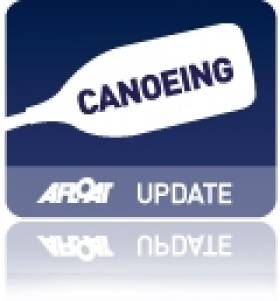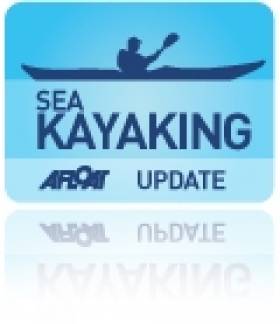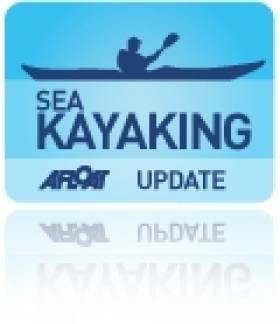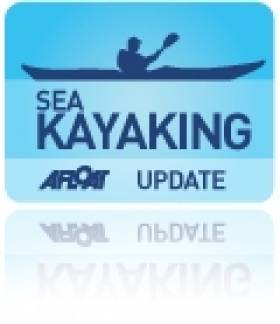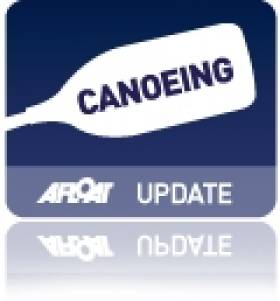Displaying items by tag: Kayaking
Cork Listed Among 'Best Cities For Kayaking'
#Kayaking - Urban kayaking is all the rage these days, with Dublin Bay a particularly popular destination for locals and visiting paddlers alike.
But Ireland's second city – once known as the 'Venice of Ireland' – is ready to stake its own claim thanks to its inclusion in Telegraph Travel's 10 best cities for kayaking.
Jim Kennedy's Atlantic Sea Kayaking runs trips that provide "a watery view of this maritime city's quays, wharfs and bridges" besides longer excursions out into Cork Harbour towards Cobh.
And Cork stands in some cosmopolitan company in this list that includes Berlin, San Francisco, New York, Melbourne, Cape Town and, of course, the famous canals of Venice itself.
Telegraph Travel has more on this story HERE.
'Ireland's Toughest Race' Brings Elite Athletes To Donegal
#Kayaking - It's been two years since David Burns and Maghnus Collins completed their epic 16,000-mile, 292-day Silk Roads to Shanghai adventure by foot, bike, raft and kayak.
They became in the process the first people to navigate Asia's longest river, the Yangtze, from source to sea by kayak.
In the meantime, they've kept their ambitions closer to home, but no less adventurous – starting a gruelling 24-hour challenge in the rugged landscape of Donegal simply called The Race.
As SportsJoe.ie reports, The Race is no ordinary race. Think a triathlon – running, cycling and swimming – but swap out the swimming for kayaking, add on an extra discipline (in thus case climbing) and cap it off with a full marathon run through the night.
All in all, competitors must cover a distance of 250km within 24 hours. And amazingly, there are some who can do that with hours to spare.
Take Canadian athlete Ben Wells, who set the record of 15 hours and 22 minutes in last year's race, and believes that even that time can be beaten in this year's even scheduled for next weekend, 7-8 March.
But for most of those taking part, only 10% "will be aiming to win it," says Burns. "The rest will be testing themselves against the course.
"The camaraderie was massive last year - everybody was willing the next person on, giving encouragement. We're expecting the same this year."
SportsJoe.ie has much more on the story HERE.
Dublin Kayaking Gets The Failte Ireland 'Living Bay' Tourism Video Treatment
#kayakireland – One of the country's kayaking operations, Kayaking.ie appears in a new Failte Ireland 'Living Bay' tourism initiative for the capital's waters. The youtube video captures the magic of interacting with marine wildlife on Dublin Bay. There are a wide variety of kayaking classes and tours in the Dublin area.
Lough Hyne Kayaking Features On TV Down Under
#Kayaking - Jim Kennedy is already reknowned in these islands as a former kayaking champion and long-time paddling guide – but now he's a TV star in Australia to boot.
As the Southern Star reports, the founder of Atlantic Sea Kayaking recently welcomed Trevor Cochrane, host of the Nine Network's ExploreTV, with a tour of the placid waters of Lough Hyne in West Cork.
Cochrane also visits nearby Baltimore, relating some of its storied maritime history, while singing the praises of the Irish coast's rugged beauty.
Injured Kayaker Recovered By Abseiling Rescuers In Clare Glens
#Rescue - An injured kayaker was recovered by mountain rescue volunteers who reached him by abseiling down a steep embankment in the Clare Glens, as The Irish Times reports.
The South Eastern Mountain Rescue personnel were described as heroes after the difficult rescue operation in the west Munster beauty spot yesterday afternoon (Sunday 4 January).
The casualty, a 26-year-old, was lifted to a waiting ambulance and hospitalised with a serious shoulder injury.
The Irish Times has more on the story HERE.
Canoeing Ireland Recruiting Youth & Club Development Officer
#Canoeing - Canoeing Ireland is recruiting a Youth & Club Development Officer to develop youth participation in canoeing and increase both the quantity and quality of canoe clubs in Ireland.
The successful candidate will be in charge of managing the Canoeing Ireland Training Centre with a focus on youth participation, which includes managing delivery of the instructor training initiative in view of club development.
They will also be expected to deliver junior training programmes – and a schools, scouts and youth competition calendar – across a broad range of disciplines.
Managing and delivering adult training programmes to kick start club growth and development will also be part of their remit, as will reviewing and developing new Canoeing Ireland club support materials, including the Club Kick Start Pack, sample constitution and sample SOPs and risk assessments.
Among the biggest requirements will be establishing a Canoeing Ireland Youth Kayaking Academy at the body's training centre at Strawberry Beds as a pilot project to be rolled out to towns and cities nationwide.
The successful candidate will also be expected to contribute at strategic events such as the Liffey Descent and junior and senior Paddlefests, as well as produce content for Canoeing Ireland's print and social media platforms.
Applicants must have at least a level 3 kayak instructorship, a full clean minibus driver's licence, a current CI-recognised first aid cert and a Coaching Ireland tutor qualification, among other requirements. All applications are also subject to Garda vetting clearance.
Full details on this role and how to apply are available via the Canoeing Ireland website HERE - which also has details on a vacancy for an administration officer. Applications must be received by Friday 16 January 2015.
Dubliners Solve Riddle Of Ghost Kayak On Scottish River
#Kayaking - An abandoned kayak in the fast-flowing River Braan posed something of a mystery for Perthshire locals, and prompted fears of a lost kayaker.
But as local paper The Courier reports, those concerns proved unfounded as two friends from Dublin solved the riddle of their 'ghost kayak'.
James O'Keeff told the paper how they only discovered the puzzle they'd left for locals when they spotted the story online.
Some days before, his friend John Stanley became separated from his kayak at treacherous rapids on the Braan known as 'the Splitter'.
The vessel was later located where it was too dangerous to retrieve, but somehow wires got crossed and the message didn't get to local emergency teams.
The Courier has more on the story HERE.
200 Chocolate Bars Fuel Kayaker's Round Ireland Adventure
#Kayaking - It started as a result of what he called a "midlife crisis" - but the end result for Kilkenny man Paul Alexander was completing a route all around the island of Ireland by kayak in just 62 days.
And as the Irish Mirror reports, he credits a certain peanut and caramel-filled chocolate bar with giving him the energy he needed to keep going - scoffing a whopping 200 of them as he paddled his way around the coast.
Alexander, 50, set out from Kilmore Quay on his canoeing adventure, and remarkably says he only experienced "three or four hairy times when I was living on the edge" over the his months circumnavigating the island - only capsizing once.
But by far his biggest takeaway from the experience, he says, are the people he met along the way, who "reaffirmed my belief in human kindness".
The Irish Mirror has more on the story HERE.
Deceased Named In Wicklow Kayaking Tragedy
#Kayaking - The Irish Mirror reports on tributes pouring in for the kayaker who died on the River Inchavore in Wicklow last Thursday evening (13 November).
Twenty-one-year-old Shane Murphy from Baldoyle in North Dublin was an experienced kayaker, whose death has "affected the community badly", said neighbour Darragh McGhee.
As previously reported on Afloat.ie, the young man died after he was swept away while kayaking with a group on the river near Lough Dan in the Wicklow Mountains.
The heavy rainfall on the day, which quickly swelled the river's waters, is believed to have contributed to the tragedy.
Kayaker Dies On Swollen Wicklow River
#Kayaking - The Irish Times reports that a man has died after being swept away while kayaking on the River Inchavore near Lough Dan in Co Wicklow.
The man, who has yet been unnamed, was out on the popular kayaking stretch yesterday (13 November) with around six others during heavy rain that quickly swelled the river's waters.
Two other kayakers were airlifted with the casualty to Tallaght Hospital but they are not believed to be injured.



























